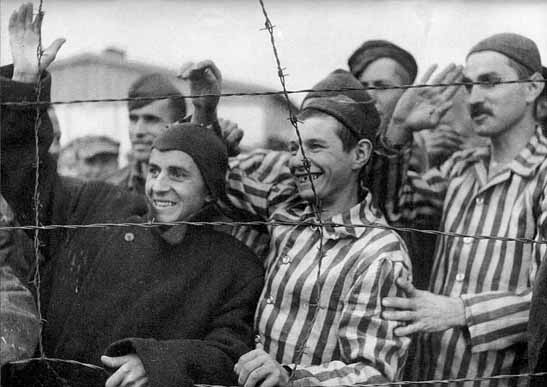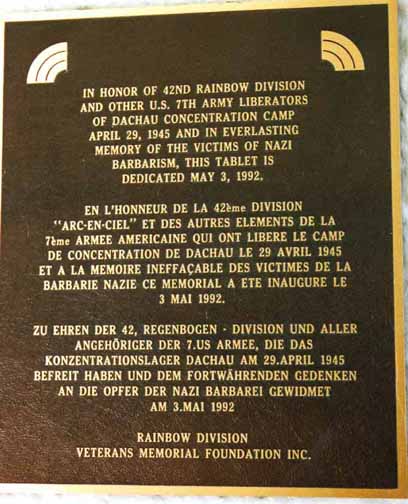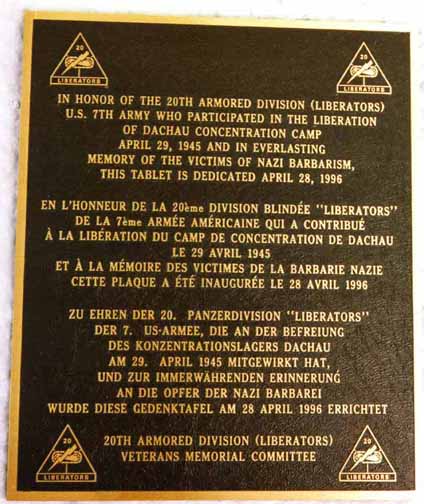42nd Rainbow Division of US 7th Army"And so, on that Sunday, we entered the camp. Angered by the sight of it, we hauled down that Nazi flag and burned it! Angered, yes, and even more: furious, enraged - even dismayed, disoriented, and made violently ill. For we had just learned a most traumatic lesson. We found out why we were fighting this war. True, we were aware of the fact that we were fighting for our country, our freedom, our way of life - for justice and even to save the world. We believed it as an accepted truth. But we believed it in our heads. Now, suddenly, as if we had been struck by a bolt of lightning, it became a revealed truth. It had burned its way into our being. Yes, Dachau was a lesson, a most expensive lesson. We had to pay for it with our innocence." Sam Dann, Dachau 29 April 1945, the Rainbow Liberation Memoirs  The Rainbow Division of the US Seventh Army has a long and proud history. The division was formed in 1917 during World War I. Its name was coined by the division's Chief of Staff Major Douglas MacArthur because he said that the division "would stretch over the whole country like a rainbow." This was a reference to the fact that the division was formed from National Guard units from 26 states and the District of Columbia. MacArthur was later promoted to Commander of the Rainbow Division. The division first saw action in World War I, fighting for American freedom in France against the "Huns," as the barbaric Germans were then called. Joyce Kilmer, a famous American poet, was a soldier in the Rainbow Division; he was killed in action in France in World War I. The Rainbow Division fought in some of the bloodiest battles of World War I including the battles at Verdun and Argonne, as well as the famous Battle of the Champagne. During World War II, the Rainbow Division was activated in July 1943, and following the Normandy Invasion, three Infantry Regiments were sent to Europe in the Autumn of 1944, ahead of the rest of the division which did not arrive in France until January 1945. The three Infantry divisions were designated "Task Force Linden," named after Assistant Division Commander, Brigadier General Henning Linden. The division fought its way across France and Germany until they finally reached Munich on April 30, 1945, a week before the Germans surrendered. Along the way, they stopped to accept the surrender of the Dachau concentration camp, the event that earned lasting fame for the Rainbow Division. A plaque in the Division's honor hangs on one of the outside walls of the Jourhaus at Dachau. This is the building which has the famous "Arbeit Macht Frei" sign on the iron gate. The first photograph below shows the Rainbow Division plaque, which was put up on May 3, 1992. The second photograph shows a plaque which was hung on the opposite wall of the Jourhaus on April 28, 1996 in honor of the 20th Armored Division of the US Seventh Army which provided tank support. The 20th accepted an invitation to be honored at Dachau when the 45th Thunderbird Division, which participated in the Dachau liberation, declined the honor.  
Purple Heart Jewel - Dedicated to the 42nd Rainbow Division45th Thunderbird DivisionSurrender of the Dachau CampExecution of the German SS soldiersThe killing of the guards in Tower BBack to Liberation of DachauBack to Table of ContentsHome |